Have you ever had a student get discouraged about smudging their drawing or struggle with getting the proportions just right? These first signs of challenge or resistance often follow with students quickly giving up. Getting students to persist through the artmaking process is particularly challenging in light of the pandemic and increased social media use. Students expect to learn everything in the span of a minute-long (or less) video instead of through hard work and effort. We want our students to persevere not only so they can improve their artistic skills, but also because resilience is an important skill to navigate life’s ups and downs. While there isn’t a quick lesson to instill persistence, there are strategies to build up resilience little by little.
Try these nine methods to build your students’ resilience.
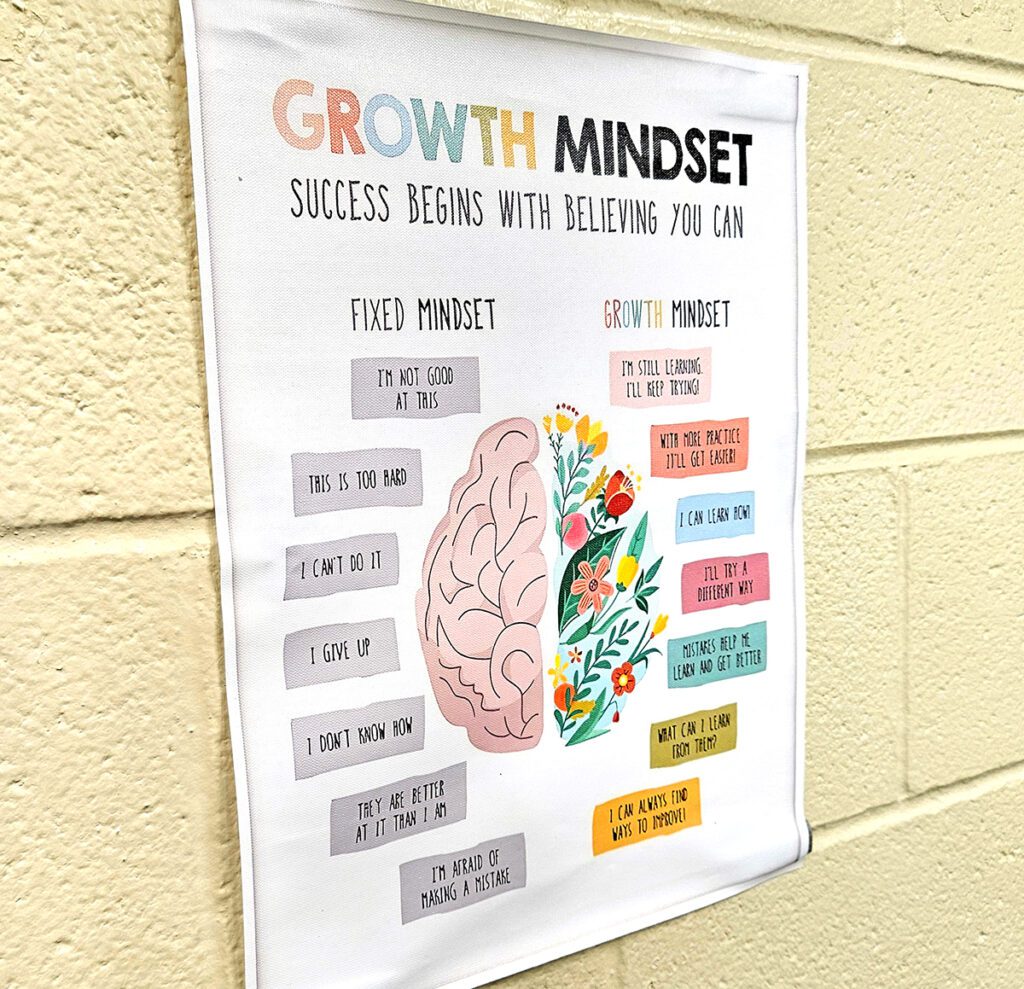
1. Cultivate a growth mindset.
A growth mindset is key to building resilience for both you and your students. If students believe they can do the task in front of them, they won’t let challenges stop them. To build this mindset, encourage students to celebrate failures and look at mistakes as opportunities for growth. Reiterate you expect failure because it’s a part of the learning process. Model this as you troubleshoot issues in the classroom and in your artwork demonstrations. Dedicate a wall to “failures” or artworks that didn’t meet student expectations.
Here are four ways to model a growth mindset:
- Use growth mindset language and switch negatives to positives.
Instead of saying, “I can’t do this,” say, “I can’t do this yet, but I will keep trying.” Instead of saying, “This is hard,” say, “I will practice this.” - Show students the artwork you make, even when it doesn’t turn out great.
Students need to know you view failures as an important part of your artistic process too! Post them on the “failure” wall for students to ask you about. - Share your struggles and how they’ve helped you grow.
When students are struggling, it can seem hopeless. Frame struggles as learning experiences to remind students that good can come from their current situation and they won’t feel frustrated or disappointed forever. - Lead by example.
When doing demonstrations, it’s tempting to try and cover up mistakes to preserve your appearance as an expert. Instead, point out things you could have done better and make adjustments. Show students you don’t let mistakes get you down or prevent you from moving forward. It conveys to students you don’t expect perfection but perseverance!
If you want more tips on how to cultivate a growth mindset in your classroom, check out the Pack, Growth Mindset in the Art Room, in PRO Learning.
2. Carve out time to set, meet, and reflect on goals.
Finishing a big art project can be daunting and discouraging! Ask them to set SMART goals focusing on their strengths and interests. Then, guide them as they break down their broad goals into actionable steps. This will help them track their progress and experience small wins along the way.
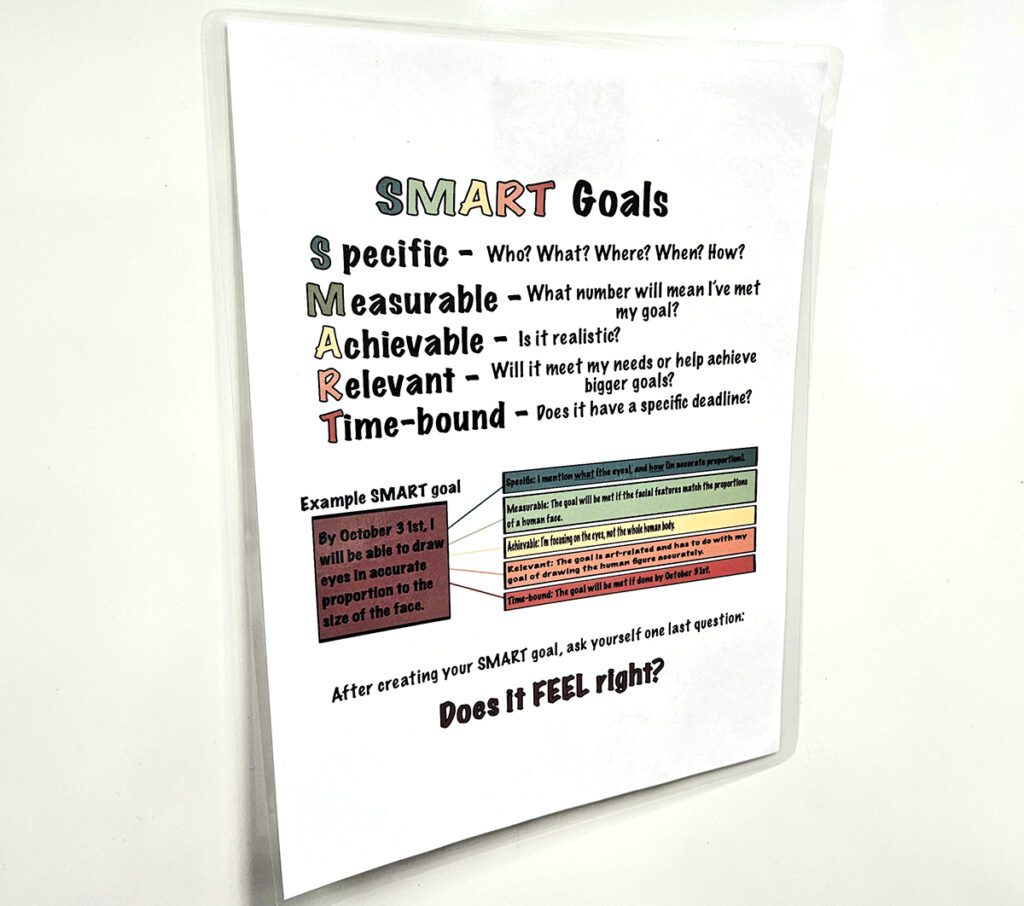
3. Teach problem-solving and decision-making skills.
If we want our students to be analytic thinkers in art class and beyond, we need to help them develop these skills. Teaching students how to scrutinize options, evaluate consequences, ask for advice, and examine risks is giving them the practical skills they need to be resilient.
These three methods teach problem-solving and decision-making skills:
- Give students ownership over their artwork.
When students have ownership of their artwork, they are invested because they have put in the time, effort, and energy to make something that reflects them and/or something important to them. They will care more, making them more likely to push through rigorous decision-making. They’ll also find decision-making easier if they’re working on a topic about which they are knowledgeable and passionate. - Conduct reflective discussions.
Ask open-ended questions to get students thinking about why they made certain decisions and to determine what decisions to make in the future. Sometimes students just need to verbalize their options to determine the best choice to make. Encourage them to articulate their thoughts and reasoning as much as possible. This will help develop automatic internal and meaningful reflection as they encounter new challenges on their own. - Promote collaboration.
Collaborative projects provide opportunities for students to problem-solve and make decisions collectively. This can relieve pressure while honing communication skills. Working together allows students to explore different perspectives and approaches to problems that they wouldn’t experience if working on their own.
4. Encourage risk-taking.
How often do you let students freely experiment without it impacting their grades? Students are more likely to express creativity and try new mediums or techniques when they know there are no negative consequences to trying and failing. However, if their efforts don’t turn out great and their grade takes a hit for it, they may not want to try something new again. Being willing to try again after failure is a hallmark of resiliency!
Support risk-taking using these two methods:
- Allow students to experiment with materials.
Before students undergo larger or long-term projects, make sure they have plenty of time and experience with the mediums they will be using. Assess this time based on participation or the number of experiments instead of skill or medium competency. If there are no safety concerns, let them try all the ways to use the materials, even if it’s the wrong way. Ask them what they learned and how they got to that conclusion. They may even come up with new styles and techniques by pushing the medium’s boundaries! - Showcase artists who use mediums in non-traditional ways.
Experimenting with materials to create unique styles is risky and it may not always pan out. Showcase artists who successfully use unique methods or mediums. This will encourage students to think outside of the box and keep taking risks. Introduce them to unconventional artists like Cai Guo-Qiang, who uses explosives and artificial intelligence, Tony Scherman who paints with wax, and Olafur Eliasson who uses natural elements like light, water, and air to intensify his installations.
5. Provide opportunities for leadership.
Giving students leadership roles within the classroom is a wonderful way to build resiliency. It makes them feel trusted and it gives them an opportunity to showcase their talents and skills. When students have clearly defined roles, they can’t shirk responsibility. It’s on them to fulfill their duties or they will face natural consequences. Just be sure to make the leadership roles manageable and purposeful so students feel empowered and are set up for success. One way to do this is through Project-Based Learning, which provides real-world experiences, collaboration, and opportunities for leadership.
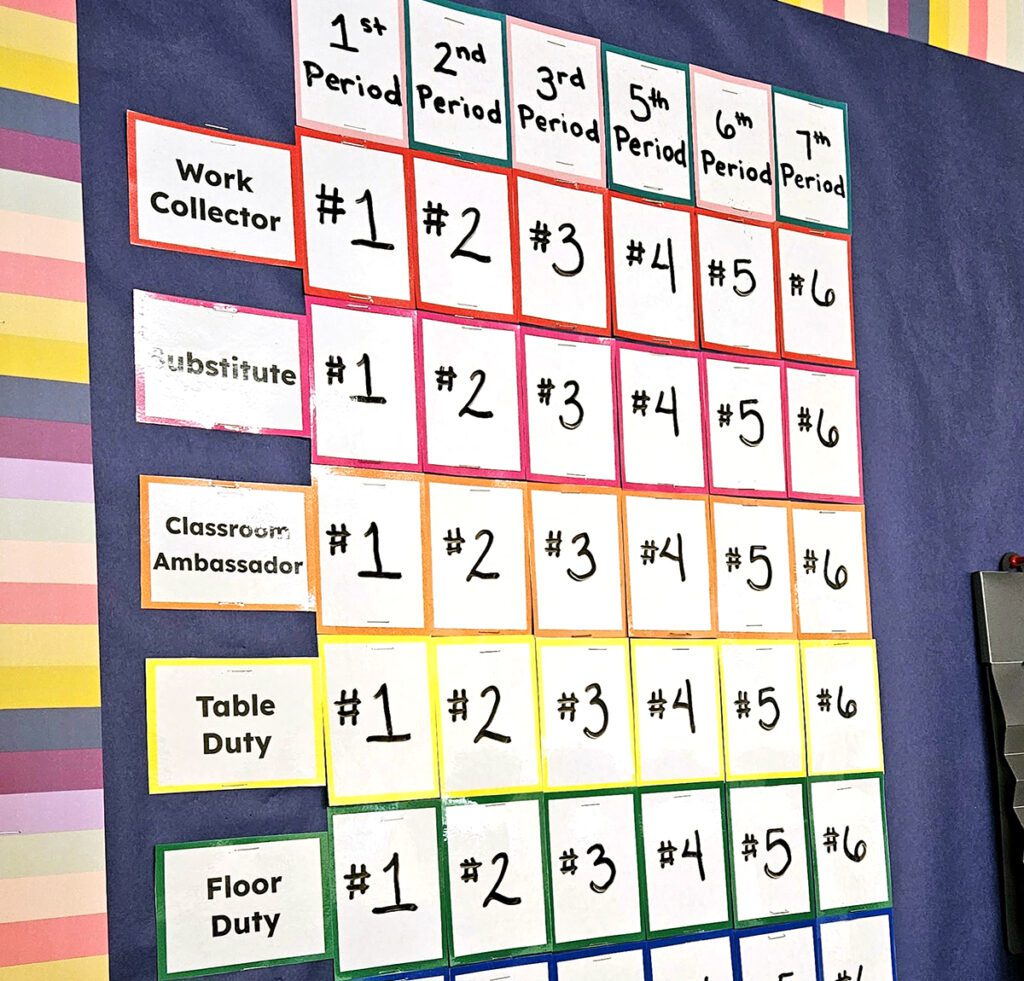
6. Make critiques supportive.
Critiques are naturally nerve-wracking. Students get nervous about sharing their art, opening themselves up to criticism, and even just talking to each other! When critiques focus on what students should improve or do better, it can make students uncomfortable to participate, or worse, want to give up on their art. Focus on the positive and ask students to do the same. Teach students to proactively frame negatives as “I wonder” statements. Then, reframe any discouraging feedback and evaluate how it could improve the artwork. Done right, critiques help students learn to persist in the face of criticism.
If you need more guidance on hosting successful critiques, watch the Pack, Critiques at Every Level, in PRO Learning.
7. Share the experiences of famous artists and guest artists.
It’s easy to imagine artists as people who only create masterpieces. Students need to know how even the most successful artists encountered challenges and turned them into triumphs. It gives students artistic role models who will inspire them to keep going!
Bring these three resilient artists into your curriculum to inspire your students:
- Louise Bourgeois
Not only did Louise Bourgeois persevere through traumatic experiences like the early death of her mother and immigration to a new country, but she also worked hard in the patriarchal art world for recognition. - Frida Kahlo
Frida Kahlo faced numerous physical hardships after a bus accident. However, neither her physical pain nor the emotional hurt from her tumultuous relationship with Diego Rivera could stop her from creating powerful art! - Claude Monet
In spite of his current fame, when Claude Monet started his career, art institutions and critics shunned him. He was even told his paintings looked unfinished and lacked skill! He pushed through and became one of the leading artists of the Impressionist movement.
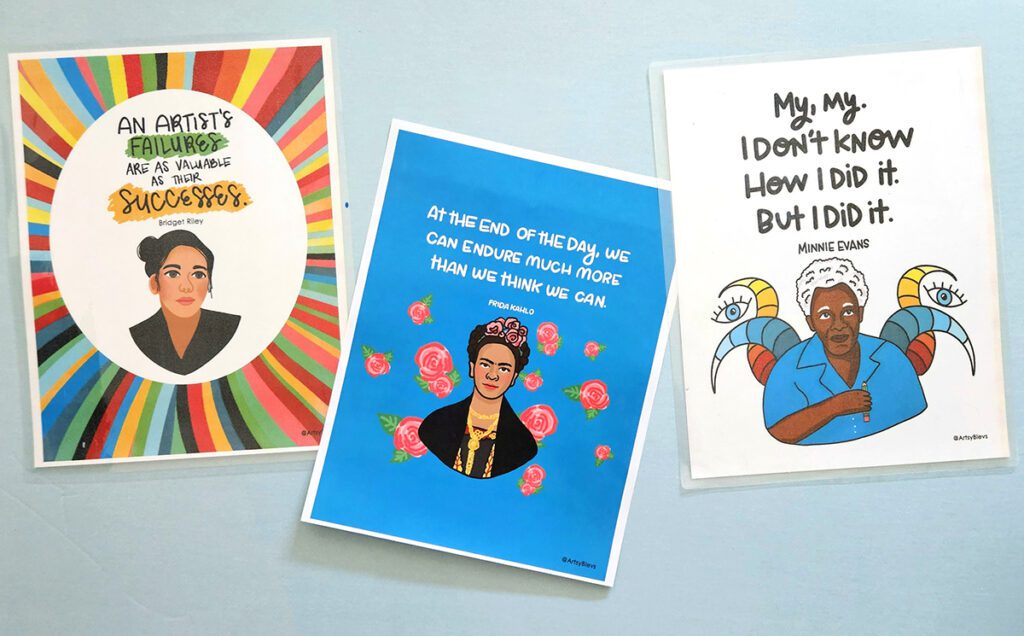
8. Document the artistic process.
When students document their process, there is more intentionality around stopping to notice progress. Plus, students are able to go back and see how much they’ve accomplished. Snap progress photos and pair them with a short reflection that captures what is going well and what they would do differently. Let them use their digital or physical process journal as a personal place of reflection and encouragement. They can also record peer tips or guest speakers’ motivational quotes.
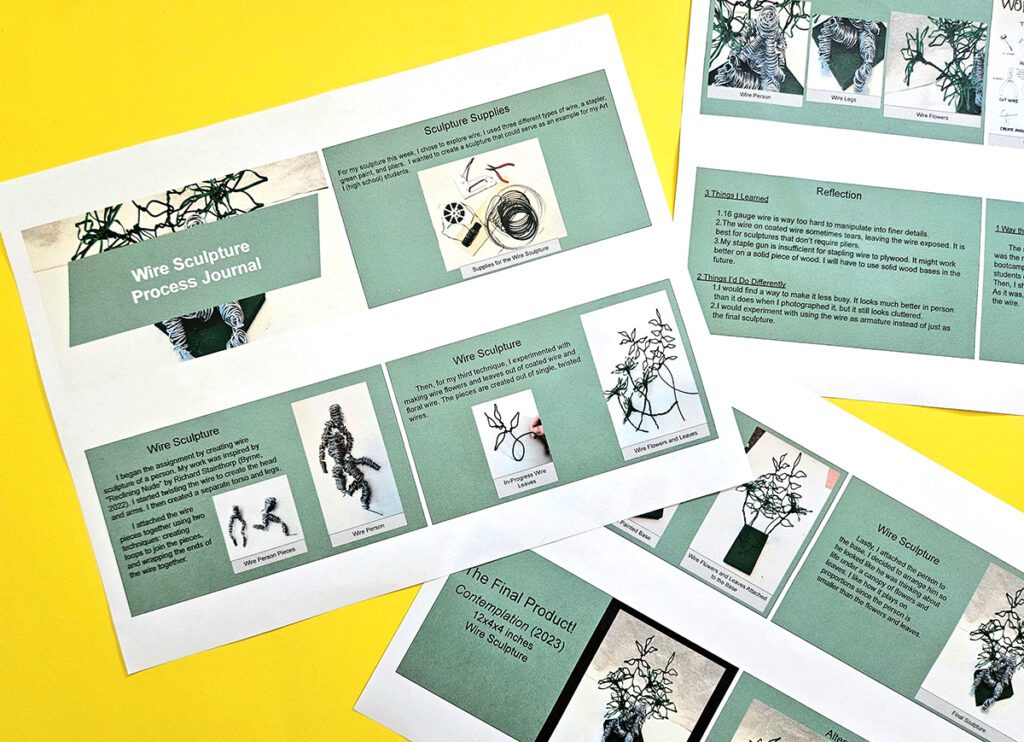
9. Celebrate effort and progress.
Recognizing when students complete small steps is as important as recognizing when they make fantastic fully-realized artworks. Strive to consistently give students positive feedback and celebrate growth. Students will develop resilience when they can see the importance of their progress, even if their art does not yet meet their expectations.
Although celebrating small wins is important, it’s essential to recognize you do not need to celebrate everything and everyone at all times. Be strategic and intentional and praise students when you see them do something difficult or complete an action step. Part of building resilience is learning to push through and do the hard things, even when they don’t want to and even when no one is watching. Over time, this builds integrity and character around their daily work and commitments.
Use these three methods to strategically praise progress:
- Celebrate milestones.
Remember those goals your students set? Make sure students break them down into smaller steps or milestones. This way, even if they never reach the big goal, you can measure and celebrate their growth along the way. - Review portfolios.
The ultimate way to prove to students how much they’ve grown is by incorporating regular portfolio reviews. A few times throughout the school year, ask students to pull out their portfolios and choose the artworks showing the most growth. Participate by pointing out growth they haven’t recognized yet. - Conduct pre- and post-assessments.
Pre- and post-assessments aren’t just for art teachers—they’re also for students! Even if students don’t feel like they’ve mastered a technique or medium, they can compare their pre- and post-assessments to see how much they’ve accomplished!
Resiliency is an important life skill students need to succeed not only in school but also in life. While there isn’t one quick way to instill resiliency in students, you can foster it over time. Employ intentional methods to cultivate persistence, like modeling a growth mindset and scaffolding goal-setting and problem-solving skills. Encourage risk-taking and embrace mistakes as part of the learning and artistic process. Provide opportunities for leadership and allow students to take ownership of their artwork. Keep things positive by celebrating intentional effort and progress and keeping critiques constructive. Before you know it, your students will start flexing the resiliency muscles they’ve gained!
How do you build your students’ resilience in the art room?
What art projects would you do if your students boosted their resiliency?
Magazine articles and podcasts are opinions of professional education contributors and do not necessarily represent the position of the Art of Education University (AOEU) or its academic offerings. Contributors use terms in the way they are most often talked about in the scope of their educational experiences.





